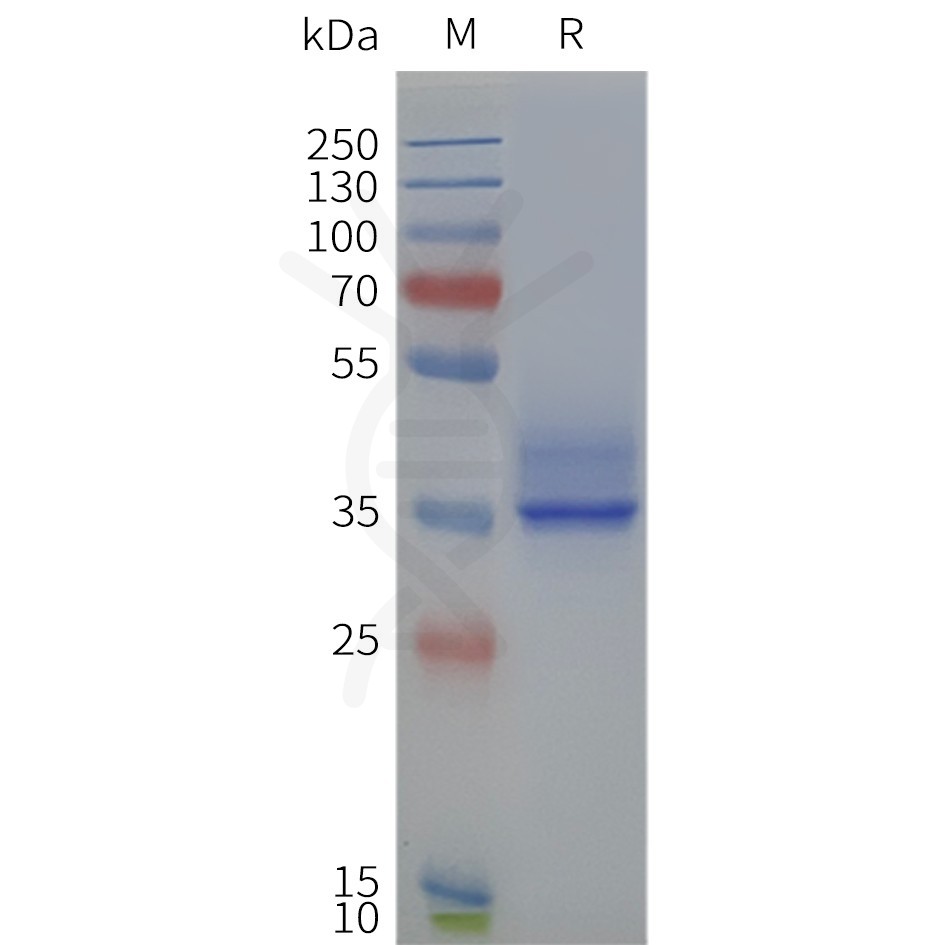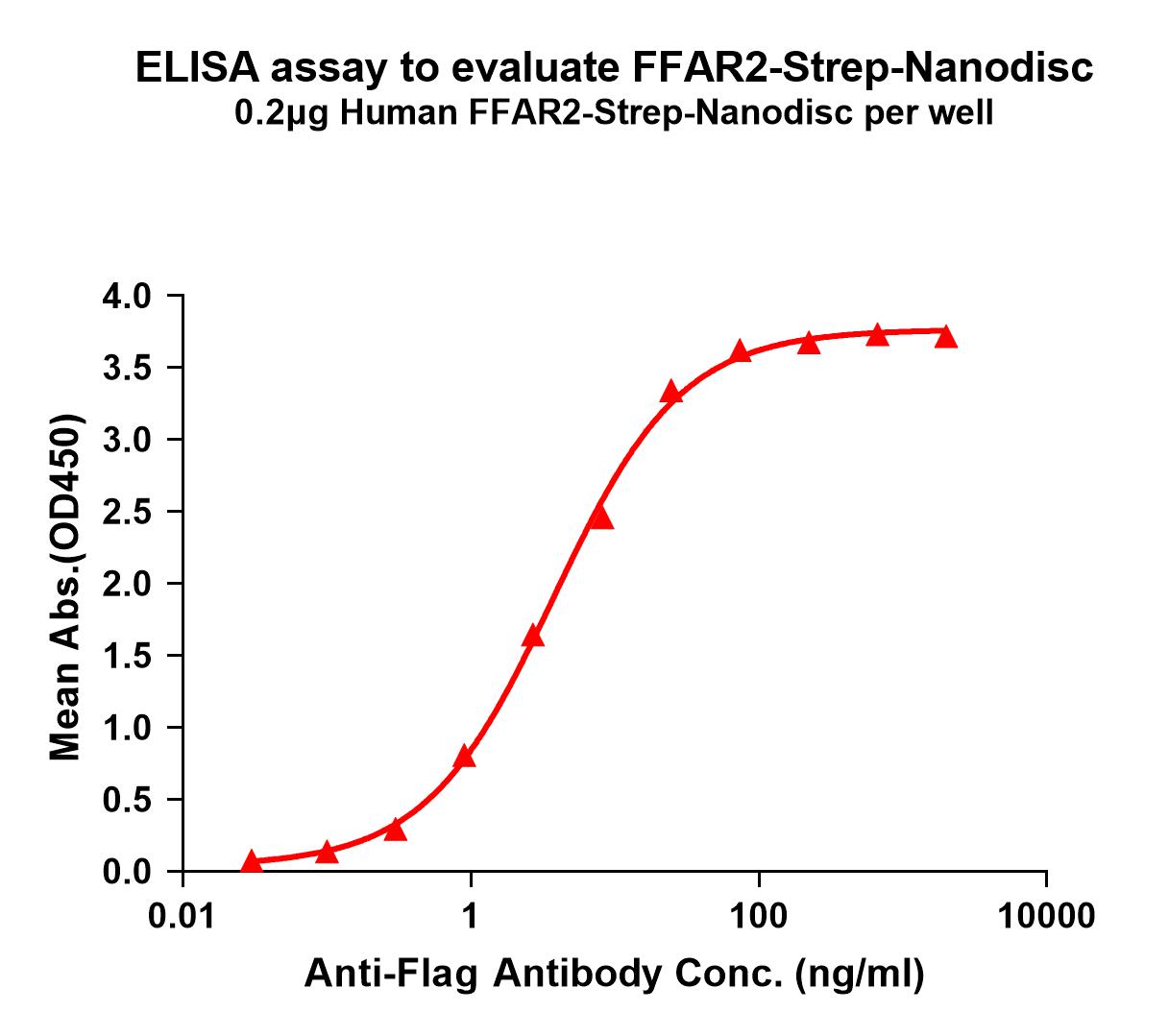| Tag | C-Flag&Strep Tag |
|---|---|
| Target | |
| Synonyms | FFA2R; GPR43 |
| Description | Human FFAR2-Strep full length protein-synthetic nanodisc |
| Delivery | In Stock |
| Uniprot ID | O15552 |
| Expression Host | HEK293 |
| Protein Families | Druggable Genome, GPCR, Transmembrane |
| Protein Pathways | N/A |
| Molecular Weight | The human full length FFAR2-Strep protein has a MW of 37.1 kDa |
| Formulation & Reconstitution | Lyophilized from nanodisc solubilization buffer (20 mM Tris-HCl, 150 mM NaCl, pH 8.0). Normally 5% – 8% trehalose is added as protectants before lyophilization. Please see Certificate of Analysis for |
| Storage & Shipping | Store at -20°C to -80°C for 12 months in lyophilized form. After reconstitution, if not intended for use within a month, aliquot and store at -80°C (Avoid repeated freezing and thawing). Lyophilized proteins are shipped at ambient temperature. |
| Background | G protein-coupled receptor that is activated by a major product of dietary fiber digestion, the short chain fatty acids (SCFAs), and that plays a role in the regulation of whole-body energy homeostasis and in intestinal immunity. In omnivorous mammals, the short chain fatty acids acetate, propionate and butyrate are produced primarily by the gut microbiome that metabolizes dietary fibers. SCFAs serve as a source of energy but also act as signaling molecules. That G protein-coupled receptor is probably coupled to the pertussis toxin-sensitive, G(i/o)-alpha family of G proteins but also to the Gq family. Its activation results in the formation of inositol 1,4,5-trisphosphate, the mobilization of intracellular calcium, the phosphorylation of the MAPK3/ERK1 and MAPK1/ERK2 kinases and the inhibition of intracellular cAMP accumulation. May play a role in glucose homeostasis by regulating the secretion of GLP-1, in response to short-chain fatty acids accumulating in the intestine. |
| Usage | Research use only |
| Conjugate | Unconjugated |
服务热线
400-006-0995
18062749453





